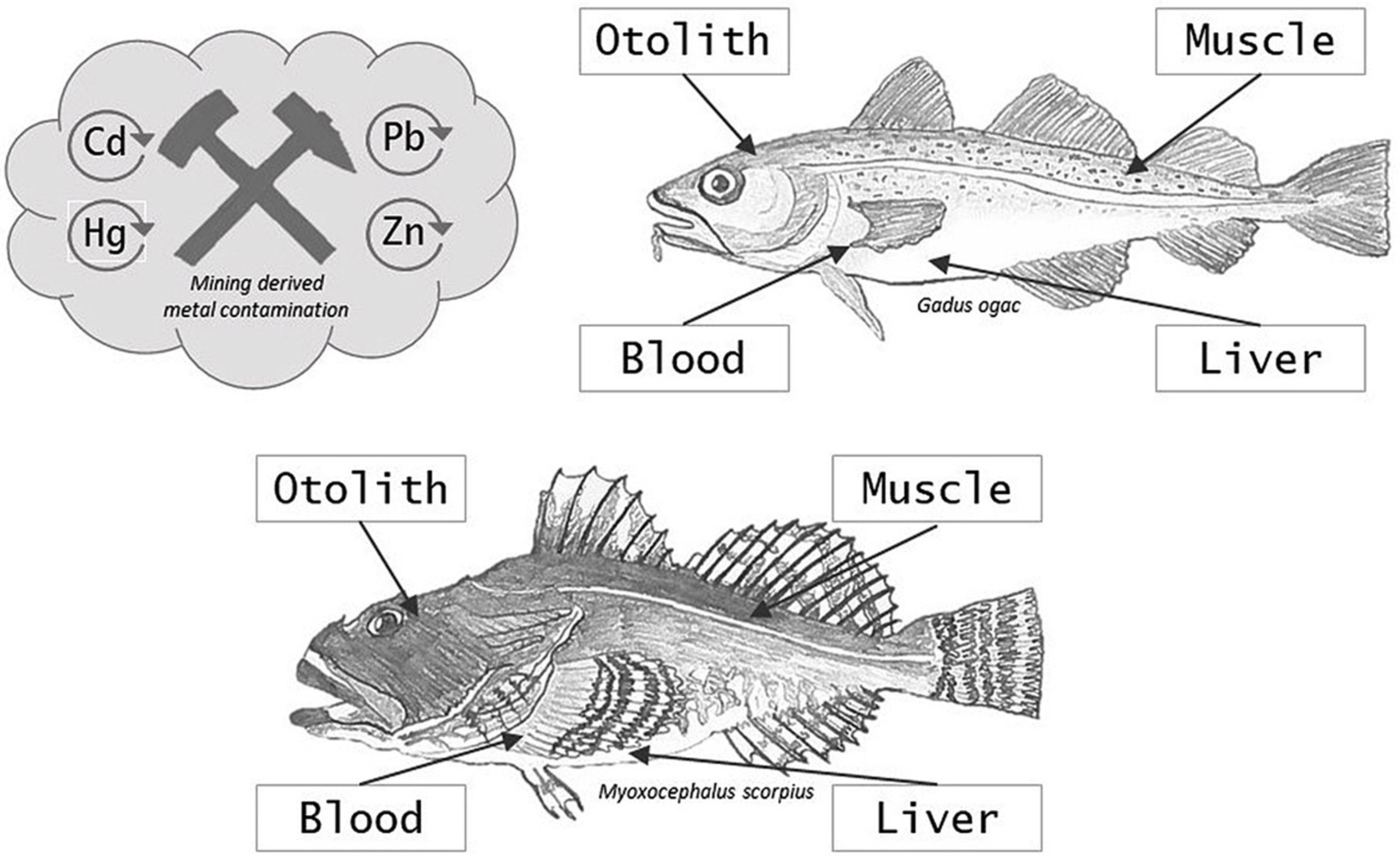Bioaccumulation of mining derived metals in blood, liver, muscle and otoliths of two Arctic predatory fish species (Gadus ogac and Myoxocephalus scorpius)
New publication by Sophia V. Hansson, Jean-Pierre Desforges, Floris M. van Beest, Lis Bach, Norman M. Halden, Christian Sonne, Anders Mosbech, Jens Søndergaard.

Abstract:
Mining activities can cause adverse and long-lasting environmental impacts and detailed monitoring is therefore essential to assess the pollution status of mining impacted areas. Here we evaluated the efficacy of two predatory fish species (Gadus ogac i.e. Greenland cod and Myoxocephalus scorpius i.e. shorthorn sculpin) as biomonitors of mining derived metals (Pb, Zn, Cd and Hg) by measuring concentrations in blood, liver, muscle and otoliths along a distance gradient near the former Black Angel Pb–Zn mine (West Greenland). We detected metals in all tissues (except Cd and Hg in otoliths) and sculpin generally displayed higher concentrations than cod. For both species, concentrations were generally highest closest to the dominant pollution source(s) and gradually decreased away from the mine. The clearest gradient was observed for Pb in blood and liver (both species), and for Pb in otoliths (sculpin only). Similar to dissolved concentrations in seawater (but in contrast to bottom sediment), no significant decrease was found for Zn, Cd and Hg in any of the tissues. This demonstrates that by including tissues of blood (representing recent accumulation) and otolith (representing more long-term exposure signals) in the sampling collection, the temporal information on contaminant exposure and accumulation can be extended. We therefore conclude that both fish species are suitable as biomonitors near Arctic mine sites and, moreover, that blood and otoliths can serve as important supplementary monitoring tissues (in addition to liver and muscle traditionally sampled) as they provide extended temporal information on recent to long-term contaminant exposure.
